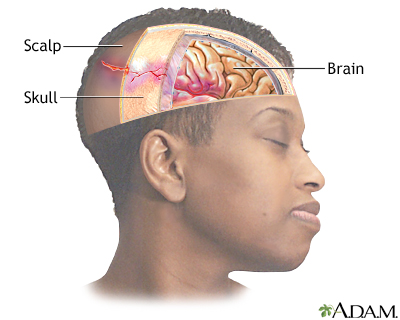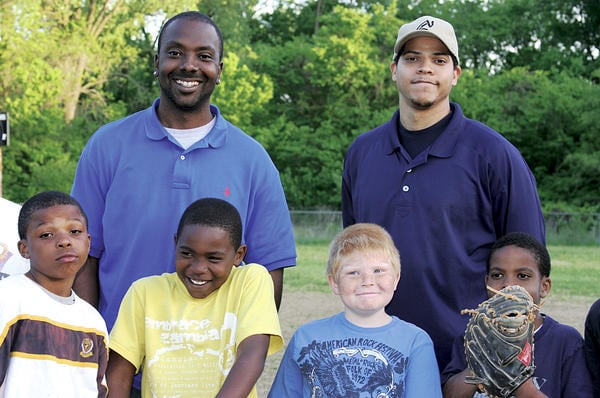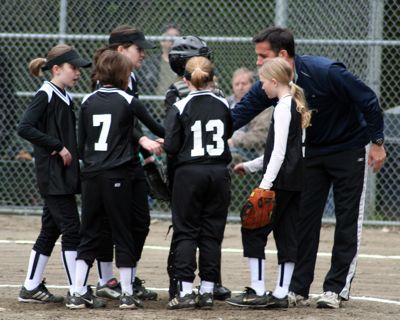Youth Sports: Different Topics
Wednesday, December 7, 2011
Brain Injury: Our Youth Should Take It Seriously
Back in the day when I played, kids got their “bell” rung and it was no big deal. We were just told to shake it off and take a play or series off. Opps! Maybe we should of taken head injuries more seriously. But who do we blame? The player, the Coach, or the parents. I believe the responsibility falls on all three. A player should know whether or not he/she is feeling light headed or dizzy. The Coach and parents should notice differences about their kids.
In today’s sports setting I believe the awareness of head injuries has risen drastically. Studies have been done from youth players all the way up to professionals. Last year alone 767,225 youth players went to the E.R. for a head injury visit, while 80,715 were hospitalized and 11,200 died due to trauma to their head. (http://www.wbir.com/news/local/story.aspx?storyid=157555)
People, this is a serious matter. We’re talking about the possibility of DEATH! Parents and Coaches need to educate themselves and do what’s right and not think about their success. Once a person shows any symptoms (blurred vision, dizziness, drowsiness, fatigue, headaches, sadness, loss of orientation and consciousness, to name a few), they need to be seen by a physician and only they can determine what’s going on. Life is too short to let a head injury take you down because of lack of awareness. A great web-site to look into if you have questions is: www.knowconcussion.org. Don’t let this silent killer, take you or a loved one too early.



Youth Sports Should Be Fun
Who said youth sports should be fun? A lot of people. But why aren’t they, everybody only gets to be a kid once. Why do parents take it over board and push their child to the limit? Is it because they want to live their childhood through their kids or see dollar signs because a coach said that their child will be good, or that the parents failed in sports and want their child to be success? I believe only the parents that act like that know the answers to those questions. As parents some of us put too much pressure on our kids, I know I have been one of those parents, but why I ride my kids is because myself and everyone else knows that they’re slacking and are better than they’re performing at that time and just want them to give it their all and not look back later and say “I should tried and given it my best and maybe we would have won” instead saying “I gave it my best and we just fell short, we’ll get them next time.”
Going through college and receiving a degree in sports and learning about involvement and different other aspects in sports has really opened my eyes and I believe has made me a better coach and a better father/coach. Kids are kids and need to enjoy life while they can, because in a blink of an eye they’ll be moving out and going into the world on their own. So…sit down, put your feet up and enjoy their ride through sports and support them in any way you can.
Social Class in Youth Sports
Does social class really make a difference in whether kids play youth sports? Some say “yes” and some say it only affects girls. I believe social class affects the opportunities kids have, where maybe a kid in the upper social class has the money go to special camps and/or travel where the “premiere” competition is. Also parents could have connections in the sport community and can get their child into the click and/or train with a professional.
As far as the lower class goes, I’m not saying that they are not as good but just less opportunity. There are programs like Boys and Girls Clubs that allow for equal participation and have scholarships for lower income families.
My philosophy is “Don’t judge a book by its cover.” Who cares if a child isn’t financially set or comes from an atmosphere when drugs are part of their daily lives, if the child want to learn and grow, then he/she should be given that chance. Sports are so much more than just putting a ball in a hoop or passing it to your teammate; they are outlets for so many different reasons for children. So, if you’re able to contribute to a local program, please do and show these kids that life is alive and that people do care whether or not they do drugs or anything else illegal. Let’s show them that one can be rich in the heart and not just in the pocket books.

Girls in Youth Sports
“Since the passage of Title IX in 1972, the number of girls playing sports has gone from one in twenty-five to one in three. Yet some people still cling to the notion that girls are simply not as interested in sports as boys. Research by the Women's Sports Foundation, however, proves otherwise: a recent study of pre-adolescent boys and girls (those between the ages of 6 and 9), shows that they are equally interested in playing sports.” (Importance of “Sheroes” for Young Female Athletes)
Having the experience of coaching youth girls from the age of 5 through 10, I found that girls can be just as exciting as boys when they want to. I mean this by some girls are just playing because their parents are making them, but then there are others that show that drive and determination. On my kindergarten team we had only two girls, my daughter and another. The other girl was a bigger girl but boy when you told her to get in there with the boys she’d show them up, I didn’t want to be the boy she was aiming for. Then you have my daughter who just wanted to socialize and sit the bench whenever she could.
I’ve always said if I were to receive a coaching position in boy’s high school basketball, I would rather take them to a women’s college game than a men’s game. Why? Because I believe if you take them to a men’s game there is a lot of dunking and flashiness going on. Whereas the women’s game seems to focus on the fundamentals and execution of the game. Girls need to be involved in sports, because sports teach kids more than just to be active (if you have the right coach).


Sunday, December 4, 2011
Pay-to-Pay in Youth Sports
Every sport requires different equipment. Parents pay for new shoes, cleats, shorts, shin guards, and sometimes uniforms. With economies falling by the day, programs are no longer able to fund sports and/or extra activities. A solution to keep sport programs going is pay-to-play strategy. This strategy has every player pay an additional fee (playing fee) so that it can fund the programs. So, now the lack of funds goes off the programs back and onto the parents back, making them the ones to have to sacrifice for their child.
In this case I totally understand why certain programs have to incorporate this policy. I’d rather have this option then not having any opportunity at all. I know one program around my house has incorporated this but instead of charging a fee to play the actually sport, parents have to pay for a membership for their child, even if they’ll never go to this facility any other time. This does take a toll on certain families, but we are blessed in our community that there are certain businesses that will pay for under privileged kids to play sports and go to the facility. Pay-to-play for youth sports is here and it doesn’t look like its going to disappear. I’m for this as long as there is still the opportunity for our youth to be active in sports and anything to keep them physically active.
Subscribe to:
Posts (Atom)



